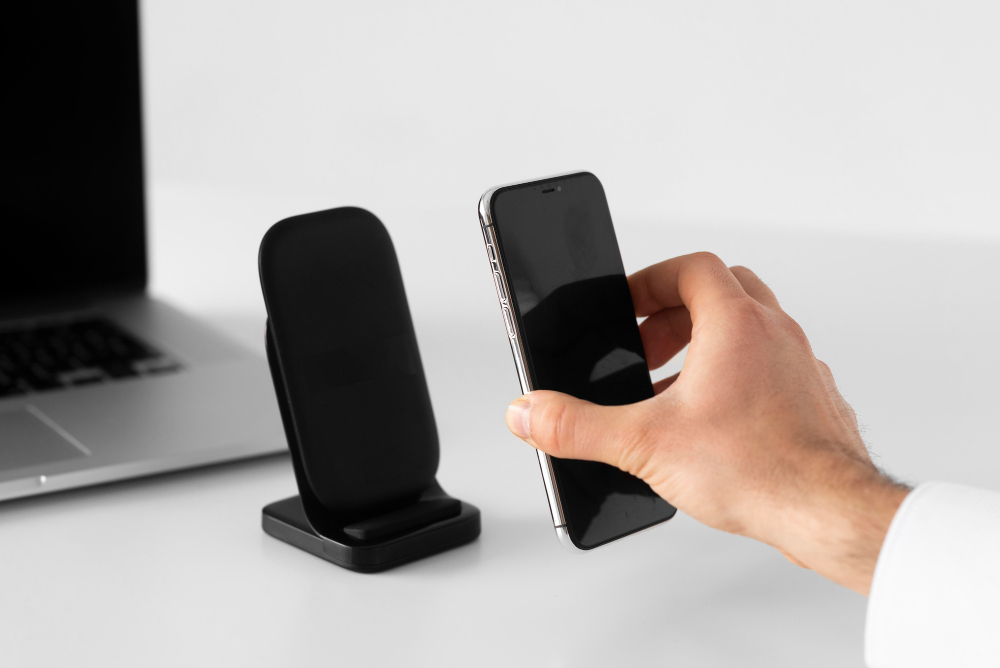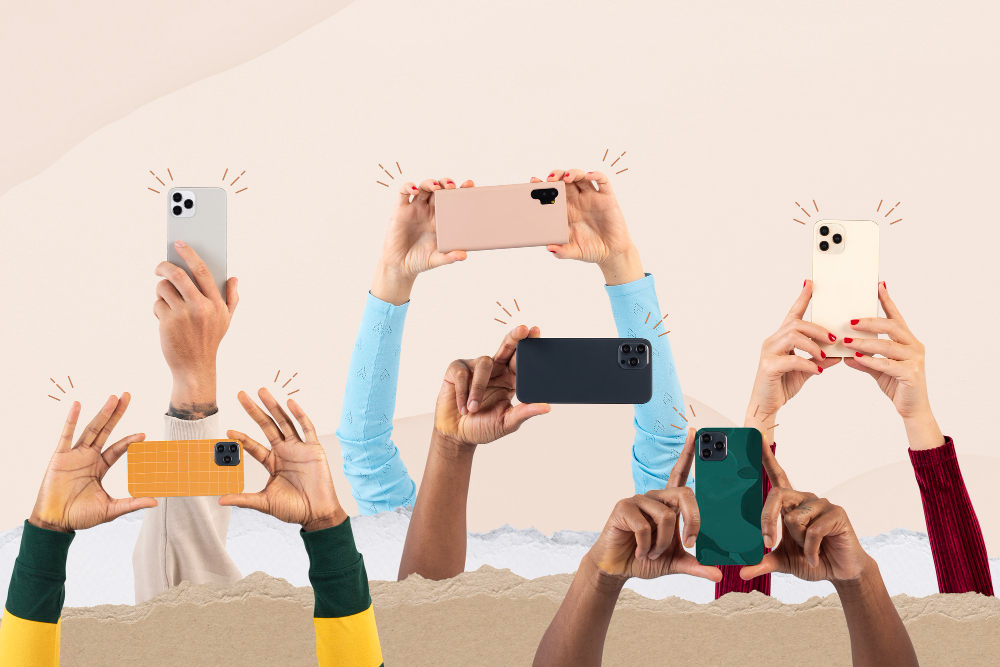Top 10 Wireless Chargers for iPhone & Android in 2025

Wireless charging has come a long way in recent years. If you’re looking to ditch cables and streamline your charging setup, high-quality wireless chargers are now a worthy investment. In this guide we’ll walk through wireless chargers that work superbly with both iPhone and Android devices in 2025, what to look for, and which models stand out.
Table of Contents
Why choose wireless chargers?
Wireless chargers offer convenience, less clutter and increasing compatibility thanks to standards such as Qi and the newer Qi2. Wikipedia+1 Many modern phones now support fast wireless charging up to 15 W (and in some cases higher). Belkin US+2GearLab+2
For both iPhone and Android users, a good wireless charger means simply placing your phone down and charging starts — no flash of plugging in cables, aligning awkwardly, or worrying about wear and tear on ports.
What to look for when choosing wireless chargers
Compatibility & standards
Ensure the charger supports both your iPhone and Android (if you use both). The charger should be Qi-compatible, and if you have the latest phones, look for Qi2 or MagSafe compatibility. For example Apple’s MagSafe design supports up to 15 W (or more with Qi2) for recent iPhones. Wikipedia+1
Charging power & speed
Many wireless chargers deliver 7.5 W (for many older iPhones) or up to 10-15 W for newer models. Some newer chargers and phones support the Qi2 standard which pushes this higher. Lifewire+1
If you frequently need rapid top-ups, a higher wattage charger is preferable.
Form-factor & design
Wireless chargers come in pads, stands, multi-device stations, or travel-friendly foldables. Consider how you’ll use it: on a nightstand, at work desk, or while travelling. For example, a stand allows you to use the phone while it charges.
Additional features
- Multi-device charging (phone + earbuds + watch)
- Magnetic alignment (especially for iPhone MagSafe)
- Cooling/ventilation if charging multiple devices
- Travel-friendly build & foldability
- Quality power adapter included (some cheap chargers don’t include a good brick)
Build & safety
Good brand chargers will include foreign-object detection, over-heat protection and quality build. Reviews show that not all wireless chargers are equal. TechRadar+1
Price vs value
You don’t always need the most expensive model, but very cheap ones may compromise speed, efficiency or safety. Aim for balance.
Top 10 Wireless Chargers for 2025
Here are ten excellent wireless chargers that span a variety of use-cases, budgets and form-factors. Each supports both iPhone and Android devices (assuming Qi compatibility) and represent strong choices in 2025.
- Belkin Boost Charge Pro 3-in-1 Wireless Charging Pad – Ideal for Apple ecosystem (iPhone + Apple Watch + AirPods) but works with Qi-compatible Android phones too.
- Anker MagGo Wireless Charging Station (3-in-1) – A foldable travel-friendly stand with multi-device support, strong build quality from a trusted brand.
- INIU I212 Adjustable 15 W Fast Wireless Charger – Great value, adjustable angle stand design, strong performance for the price. TechRadar
- Samsung 15 W Duo Pad – If you use a Samsung Galaxy + other devices, this allows dual-device wireless charging (pad style).
- Yootech 10 W Max Fast Wireless Pad – Budget friendly, simple design, gets the job done for everyday wireless charging. Rokform
- Satechi 3-in-1 Foldable Qi2 Charging Stand – Premium design, foldable for travel, supports newer standards including Qi2.
- Zens Quattro Charger Pro 4 – For households or users with many devices: up to four devices charging simultaneously. Tom’s Guide
- OtterBox Wireless Charging Pad – Simple, reliable, great value for users needing a straightforward wireless charger without bells and whistles.
- Nomad Stand One – Premium stand charger with upscale materials, strong for users who want style as well as function.
- Rokform Magnetic Wireless Charging Stand – A good option if you prefer magnetic alignment, secure mount style and more rugged build. Rokform
Choosing the right one for you
Consider your phone(s), usage environment and budget:
- If you have only an iPhone and want simplicity: a MagSafe-compatible pad works.
- If you switch between iPhone + Android, pick a charger that clearly lists multi-brand compatibility.
- If you frequently use your phone while charging (e.g., video calls), choose a stand rather than a flat pad.
- If traveling, choose foldable/portable design with included adapter.
- If you want to charge multiple devices (phone + watch + earbuds) at once, go for 3-in-1 or 4-device station.
- If you want future-proofing, look for Qi2 compatibility (which supports higher wattage and newer phones). TechRadar
Also, check that you have a good quality USB-C power adapter (wall brick) that supports the required power. Many wireless chargers require a 20 W+ adapter for full performance.
Mounting & usage tips for optimal charging
- Remove very thick or metal case-backs when charging; they may interfere with alignment or slow charging.
- Ensure your phone aligns well on the charger; misalignment reduces efficiency.
- Avoid placing the charger on surfaces that trap heat; wireless charging generates more heat than wired.
- Keep the charger’s firmware (if updatable) and your phone’s OS up-to-date for best compatibility and safety.
- If charging multiple devices, ensure the surface has enough airflow.
Why wireless charging is ready for prime time in 2025
Thanks to improved standards like Qi2 and stronger support from top brands, wireless charging is faster, safer and more versatile than ever. Experts testing many models found that modern wireless chargers perform thoroughly — not just “nice to have”. GearLab+1
For users who want a cleaner, cable-free setup on nightstands, desks or travel bags, investing in a good wireless charger now makes sense.
Our recommendation at a glance
If I had to pick one universal wireless charger for most users in 2025, I’d choose a mid-range stand with at least 15 W output, wide compatibility (iPhone and Android), and from a reputable brand. That gives you the best mix of performance, reliability and future-proofing.
Also, integrate it into your home ecosystem: you can link it to your blog or store setup (for example on your site) and mention it when advising customers or readers about accessories.
At your convenience, you can also read our review of more chargers on our site and compare specs side-by-side.
Conclusion
Wireless chargers have matured and now offer excellent value, convenience and cross-platform compatibility. Whether you’re an iPhone user, an Android user or both, there are strong options for 2025 that meet a variety of use-cases and budgets. By paying attention to compatibility standards, form-factor, build quality and charging speed, you can select a wireless charger that will serve you for years.
Choose smart, pick a reputable model from the list above, and enjoy cable-free charging every day.
FAQs
Q1: Can a wireless charger made for iPhone also charge an Android phone?
Yes — as long as the charger uses the Qi standard (which most modern iPhones and Android phones support). Many chargers advertise both iPhone and Android compatibility. Just ensure the phone supports wireless charging and the charger supports the correct wattage and alignment.
Q2: Does wireless charging damage the battery or make it slower?
Not necessarily. Modern wireless chargers include safety features like over-heat protection, foreign object detection and stable current supply. That said, wireless charging can generate more heat than wired charging, which in extremes may affect long-term battery health. Keeping your device cool and aligned properly helps maintain good performance.
Q3: How can I future-proof my wireless charger purchase for upcoming phones?
Look for models that support the latest standard (Qi2) and higher wattage (e.g., 15 W or more). That way, when you upgrade your phone (e.g., next iPhone or Android flagship), the charger will still handle faster speeds and new alignment/magnetic features. Also use a good quality USB-C power adapter as recommended by the charger manufacturer.


